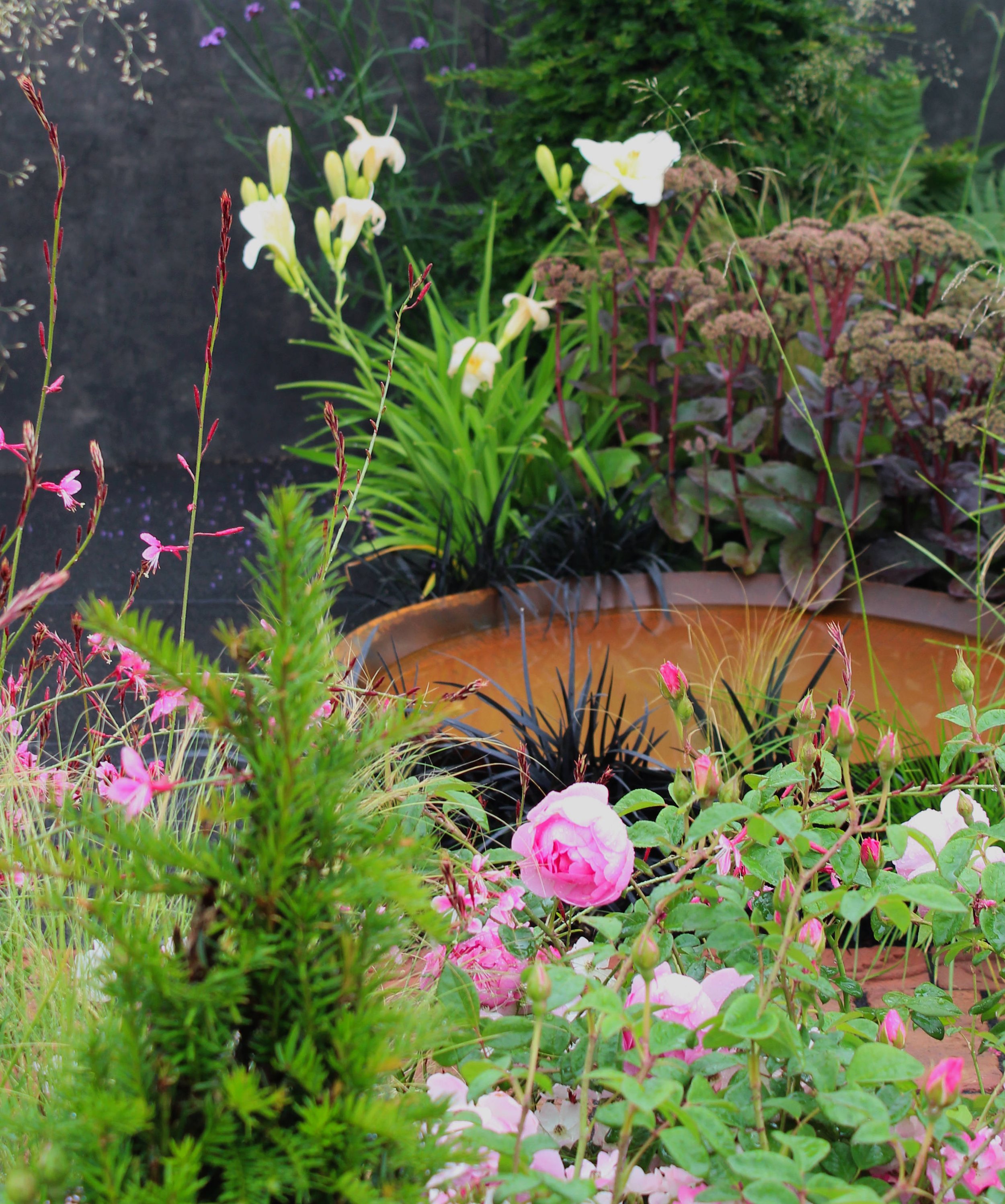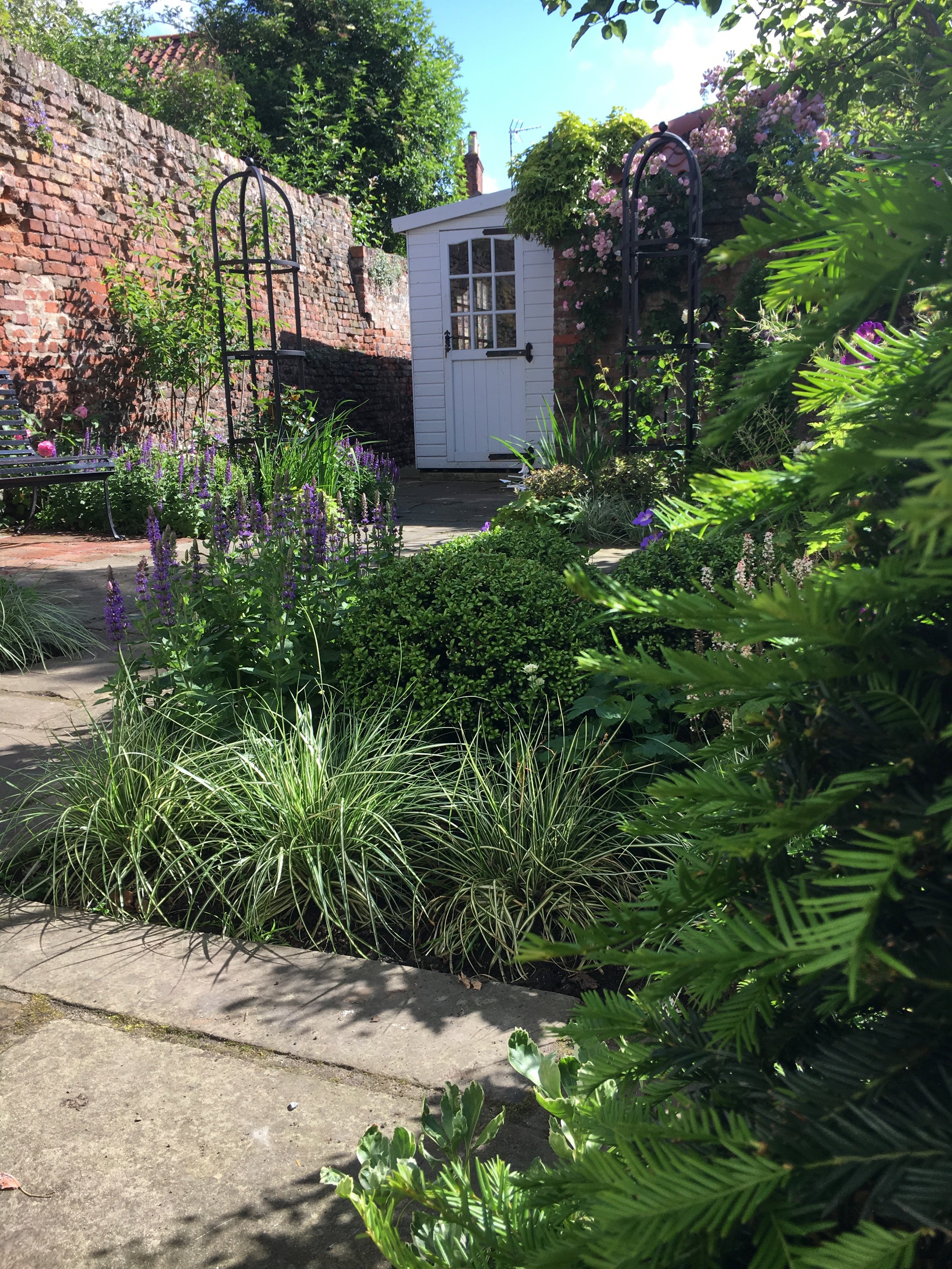The Expert Guide To Urban And Courtyard Garden Styles
What is distinct about an urban or courtyard garden
Stylish urban and courtyard gardens are an extension of your home. They will be an outdoor room for relaxing and entertaining (but we should always remember that they are a space shared with nature and will always be a little bit wild).
This style of garden can be adapted to match a period property or a new build, in either traditional or contemporary styles and, as all of the garden will be in close proximity to the house, it will usually reflect the style of the architecture and/or the interior decor. The compact nature of most urban or courtyard gardens also means that it is important that your outdoor space has one clear function (or perhaps, if space allows a couple of ‘sub-functions’ as well) - by this I mean it should be somewhere dedicated to a specific activity such as alfresco dining, entertaining, or relaxing for example. Your garden, and its purpose, will make a statement about who you are and how you want to spend your spare time.
On a smaller scale your garden therefore needs a clear and simple scheme and execution. It should also be delivered to an exacting standard because in a small space there is nowhere to hide inconsistencies or a lack of attention to detail. Everything will be on display - both when in the garden and when viewing it from inside. Also, to maximise the use of the space, care must be taken in the overall scale and proportion of different spaces - ensuring you don’t compromisie on there being enough room for your chosen activities (for example that the dining table and associated paving upon which it sits are large enough to fit all of the people you may want to invite to dine).
Finally privacy will loom large as most urban and courtyard gardens will be overlooked. Ways of creating privacy in a garden can be viewed our guide ‘creating privacy in a garden’ - but essentially your garden will need to be interesting enough for your eye to remain fixed to the garden rather than straying to its surroundings. For example when planting the larger the better - both in terms of the plants themselves and their leaves - and a few key specimens will have a much stronger visual impact that lots of smaller plants.
So what does a urban/courtyard garden look like?
Urban and courtyard gardens tend to take on a contemporary style as they are a relatively modern phenomena, as people want to have their own private outdoor space in which to relax. Of course some period homes will require a more sensitive and traditional style but even here there is often a modern extension to the rear and so the garden can draw its inspiration from the blending of both traditional and modern styles.
Another consideration, as noted above, is that the garden will probably be seen more from inside the house (through the windows) than when actually in it (such is the British weather unfortunately). Here the garden may also take some inspiration from a Japanese concept where a garden is created to be viewed from outside of the space and not within it (a study garden or ‘Shoinzukuri Teien’ is viewed like a painting, and is distinct from a smaller courtyard ‘Tsuboniwa’). The view itself is the key, and this can also lead to greater simplicity in the execution of the overall design.
A Stylistic Overview: Some Structural Highlights
An urban or courtyard garden will often draw on either the interior or architecture for inspiration
A self contained water feature provides interest and sound - and may also help regulate temperatures in the summer months
Choices for lighting and furniture are crucial - space is at a premium and everything must work together
With nowhere that is not immediately visible high quality surface materials and a high quality finish are crucial to the overall success of a scheme
The boundaries are a vital element of the overall garden - they should not visually dominate and instead should allow attention to be focused within the space (consider, for example, painting your fences black to recede visually and focus attention back towards the plants and other features)
Don’t forget vertical interest in a small space - obelisks can be used in a more traditional space (with climbing plants scrambling upwards), or a modern pergola could be used in a more contemporary space
Finally, you can make a real statement with colour in a small space - walls can be rendered and painted or clad in colourful porcelain for example. A bold colour scheme can then be picked up in the details and the furniture
A Stylistic Overview: Some Planting Highlights
Bold plants with big leaves are key to a small space - don’t try to fit lots of small plants in but instead select a few key specimens
A green wall on a sunny or shady wall can create a living picture frame effect that can compensate for a lack of green space at ground level
Add trees if you can - pleached trees to the boundary will create privacy if there is space but carefully chosen multistem trees or columnar trees (fastigiate forms) work really well in a tight space (just choose with care so that their roots remain where you want them to)
At ground level evergreen or semi-evergreen plants are important for winter interest, with other plants chosen for seasonal highlights (but seasonal plants are inevitably pared back as there is just less available space)
A courtyard is often shady so you may want to consider Geranium macrorrhizum cvs, Anemanthele lessoniana, Anemone x hybrida cvs, ferns (Dryoperis cvs or Polystichum cvs), Helleborus cvs, or Tiarella cvs
For shrubs you might consider Sarcococca cvs, Rhododendron cvs (although check your soil is acidic first), Buxus sempervirens, Fatsia japonica; climbers should also be included such as evergreen Pyracantha trained up a wall to create a block or green or perhaps Hydrangea anomola subsp. petiolaris for white flowers on a north facing wall?





